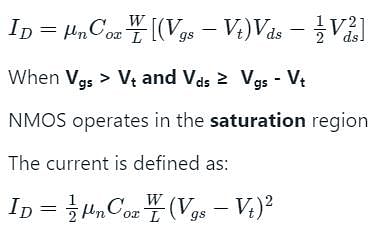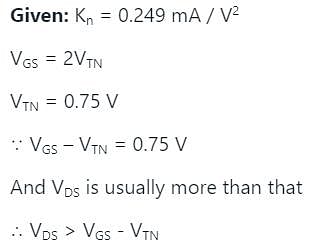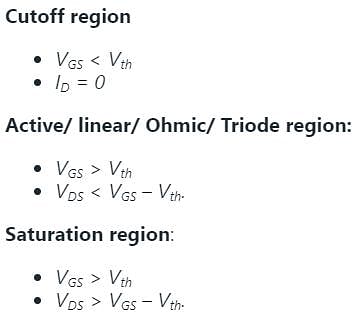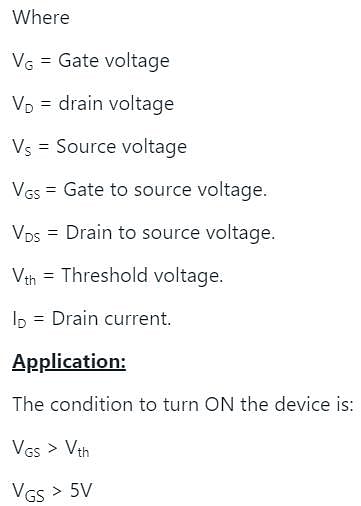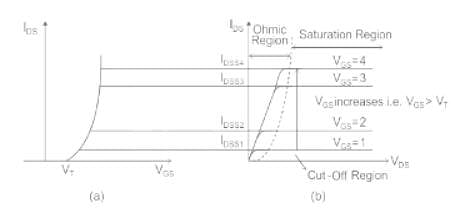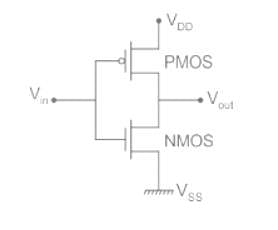Electrical Engineering (EE) Exam > Electrical Engineering (EE) Tests > Test: Types of MOSFETs - Electrical Engineering (EE) MCQ
Test: Types of MOSFETs - Electrical Engineering (EE) MCQ
Test Description
10 Questions MCQ Test - Test: Types of MOSFETs
Test: Types of MOSFETs for Electrical Engineering (EE) 2024 is part of Electrical Engineering (EE) preparation. The Test: Types of MOSFETs questions and answers have been prepared
according to the Electrical Engineering (EE) exam syllabus.The Test: Types of MOSFETs MCQs are made for Electrical Engineering (EE) 2024 Exam.
Find important definitions, questions, notes, meanings, examples, exercises, MCQs and online tests for Test: Types of MOSFETs below.
Solutions of Test: Types of MOSFETs questions in English are available as part of our course for Electrical Engineering (EE) & Test: Types of MOSFETs solutions in
Hindi for Electrical Engineering (EE) course.
Download more important topics, notes, lectures and mock test series for Electrical Engineering (EE) Exam by signing up for free. Attempt Test: Types of MOSFETs | 10 questions in 30 minutes | Mock test for Electrical Engineering (EE) preparation | Free important questions MCQ to study for Electrical Engineering (EE) Exam | Download free PDF with solutions
Test: Types of MOSFETs - Question 1
An NMOS has Id = 5 mA, Vgs = 2 V, Vds = 4 V and Vt = 0.8 V. If the thickness of oxide is 500 A° , the aspect ratio of device at room temperature is
Detailed Solution for Test: Types of MOSFETs - Question 1
Test: Types of MOSFETs - Question 2
Which type of the MOSFETs is exclusively used by MOS digital ICs?
Detailed Solution for Test: Types of MOSFETs - Question 2
| 1 Crore+ students have signed up on EduRev. Have you? Download the App |
Detailed Solution for Test: Types of MOSFETs - Question 3
Test: Types of MOSFETs - Question 4
For an n-channel MOSFET, if conduction parameter (kn) is 0.249 mA/V2, gate to source voltage VQS is 2VTN where VTN = 0.75V. The current will be
Detailed Solution for Test: Types of MOSFETs - Question 4
Test: Types of MOSFETs - Question 5
For an n-channel E-MOSFET Vth = 5V, what is the condition to turn ON the device?
Detailed Solution for Test: Types of MOSFETs - Question 5
Test: Types of MOSFETs - Question 6
The transconductance of n-channel MOSFET in linear region is:
Detailed Solution for Test: Types of MOSFETs - Question 6
Test: Types of MOSFETs - Question 7
The (Id - Vgs) characteristics of a MOSFET in the saturation region is:
Detailed Solution for Test: Types of MOSFETs - Question 7
Detailed Solution for Test: Types of MOSFETs - Question 8
Detailed Solution for Test: Types of MOSFETs - Question 9
Test: Types of MOSFETs - Question 10
Which one of the following is not a basic MOSFET device type?
Detailed Solution for Test: Types of MOSFETs - Question 10
Information about Test: Types of MOSFETs Page
In this test you can find the Exam questions for Test: Types of MOSFETs solved & explained in the simplest way possible.
Besides giving Questions and answers for Test: Types of MOSFETs, EduRev gives you an ample number of Online tests for practice
Download as PDF


